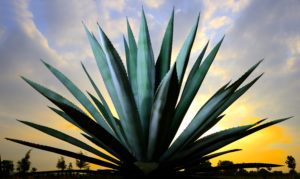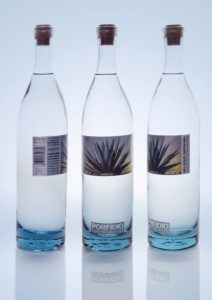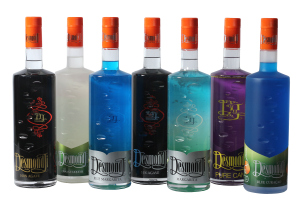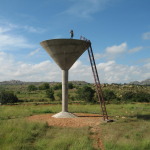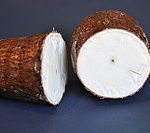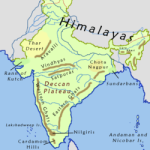100% Agave Spirits Made in India
Back in 2014, I wrote a number of articles about Desmond Nazareth and his Agave India products, as well as how agave made its way to India. (See articles here and here.) Recently, I learned that Desmond has joined forces with Martin Grassl, the founder of Porfidio tequila.
Here is how their joint venture is described on Old Town Liquor’s website.
The joint venture was created out of the mutual respect of two entrepreneurs of disparate backgrounds but with similar creative minds. They shared a profound admiration for a botanical wonder, the “tree of marvels” as the Spanish Conquistadors called the agave when they encountered it in Mexico.
The product is called SINGLE AGAVE® 100% AGAVE AMERICANA EDITION (Code Name: S3xA). It’s not made in Mexico but in southern India— the Deccan Plateau, a geographical area where the agaves grow. As the story goes… the agave was transplanted from Mexico to India by Queen Victoria for fencing off the railways of the Raj to stop Holy Cows from being crushed by trains. The Agave Americana is the producer’s way of celebrating that 100-year-old event by distilling the wild plants.
I spoke with Desmond Nazareth or DesmondJi, as his brand is called, and here are excerpts from the interview.
BB: How did your relationship with Martin Grassl and Porfidio come about? How did you and he meet?
DN: The relationship was born out of respect for each other’s achievements and each other’s product quality. Martin noticed articles about Indian agave spirits appearing around 2012 in the Mexican press and contacted me.
It was both Martin’s and my opinion that agave spirits— be it tequila, mezcal or other— are unique precisely because of the botanical uniqueness of the agave plant (“the inulin factor”), the true and only star of the equation, not because they are Mexican-made.
The idea, of course, is not new, as it simply mimics what Baron Rothschild did for the world of wines 50 years ago by creating the first non-French wines in Chile and Napa. It was revolutionary idea at the time.
Both Martin and I strongly feel that Indian agave spirits, made in our craft distillery (India’s first), should be viewed in the same league as Mexican agave spirits like mezcal, by nature of being made from naturally grown and foraged agave plants, as opposed to plantation-grown agave plants. The fact that my products are made from 100% Agave Americana, rather than 100% Blue Agave, takes our premium products intentionally beyond tequila, along the lines of Mexico’s finest mezcals.
BB: This is a special edition product, how is it different from your other Agave brands?
DN: It differs in terms of product formulation from our other agave spirits products. Certain adjustments were made to the hydrolysis, fermentation and distillation process to create a product which is more attuned towards international taste profile preferences, rather than India’s domestic preferences. For this first special edition, a traditional process of heat hydrolysis has been used, the oven cooking method.
BB: Can you discuss the nature of the business relationship between the two companies?
DN: Single-Agave 100% Agave Americana is a joint venture product between DesmondJi and Porfidio. It forms part of Martin Grassl’s brainchild “world series” of non-Mexican made agave spirits, such as agave spirits made from Agave Cocuy (Venezuela), Agave Australis (Australia) and Agave Karoo (Africa). Agave spirits can be made wherever agave is grown, same as high quality wine can be made wherever appropriate grapes are grown. France certainly never liked the idea of the coming into existence of wines from Napa Valley, Barossa Valley and Mendoza, I guess it could not be helped, as it is the natural progression of things.
Agave India is essentially the ‘field-to-bottle’ producer of Indian craft spirits and Porfidio is a premium global co-branding and marketing partner We jointly decide what is an appropriate craft offering for the global market.
BB: Where do you see this joint venture going in the future?
The idea is to expand quickly into super-premium barrel aged expressions Indian Agave spirits, similar to Mexican Reposados and Añejos. Ours is a step-by-step approach, with the Blanco-style expression simply a starting point.
BB: Tell us more about the story behind the idea— “the agave was transplanted from Mexico to India by Queen Victoria for fencing off the railways of the Raj to stop Holy Cows from being crushed by trains.”
DN: There are two happenstances which brought about the existence of Indian agave spirits. For one, the general nature of the so-called Colombian Exchange, by which the agave, among many other plants and animals, “went international.” In addition, the Agave Americana arrived in India as a cost-effective means of fencing off the British rails to protect its trains from killing or maiming animals.
While the British probably single-mindedly aimed at protecting their financial assets— their trains—the concept of this fencing idea was equally a culturally-sensitive decision by the British Crown in protecting India’s free-roaming Holy Cows, one of our spiritual and cultural assets.
So, the “agave solution” was embraced by the colonizers and the colonized, as benefiting both. Neither “them” nor “us” grasped the true dimension of this pivotal fencing decision as the Mesoamerica-sourced Agave Americana proliferated beyond anyone’s wildest expectations on Southern India’s fertile soils, the Deccan Plateau Highlands. Why the Empire chose the Agave Americana towards such purpose—used in Mexico to produce some of the finest Mezcal—rather than any other variety, is a mystery still to be fully uncovered by botanical historians. Whatever the reason for the choice, it unquestionably benefited us.
BB: Other than in the US are there other countries where you’re working together?
DN: The US is the world’s biggest market for agave spirits. So, we thought it a good idea to do the initial special edition product launch in the US. Our next target market is Japan and China, based on Porfidio’s existing distribution platforms in these countries.
Thank you, Desmond.
